Lucia and the Egyptian Amulet by M.A. Erki
by: Susan W. Smith
MA. Erki will be familiar to TI Life readers when written as Marie-Anne Erki, our official online artist and illustrator. For the past three years, Marie Anne has generously given her time and her imagination to illustrating several articles. Recently, we learned that she has published a book – one that is interesting and certainly about subjects with which this editor was not familiar – which made this 62-page, soft cover book something I needed to have.
Kingston residents and those in the academic world will recognize Marie-Anne as a retired full professor and former Head of Civil Engineering at the Royal Military College of Canada (RMC), and also as the author or co-author of more than 100 publications in refereed journals, conference proceedings, and books. She is also the second author of six books of translations of modern Urdu poetry. After retiring from RMC, Marie-Anne pursued her interests as a professional illustrator and painter.
In researching this article, I realized that her Preface really describes the book, and it makes it easy to understand what Lucia and the Egyptian Amulet is about. The preface is published below, followed by the answers to some of my questions.
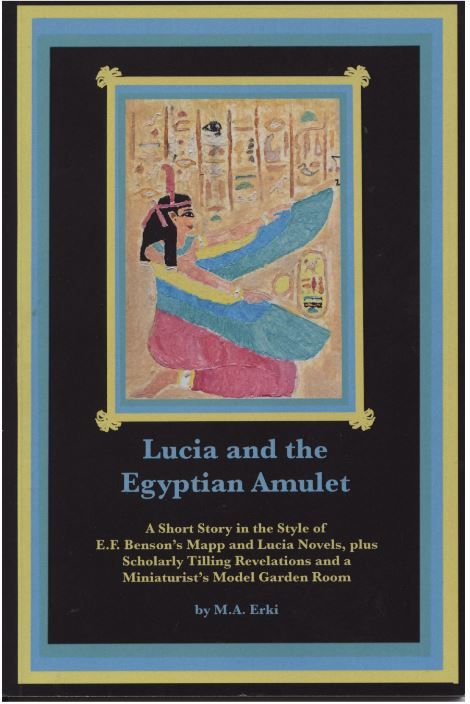
PUBLISHED PREFACE
In 1885, E.F. Benson's sister, Margaret Benson, became the first woman to be given permission to conduct an excavation in Egypt. She worked for three seasons at the Temple of Mut in Karnak, 1885 to 1887, until ill health forced her to stop. That story is itself fascinating. Margaret and Fred Benson, while both highly educated in the classics and university graduates, were also amateur archaeologists. Fred had focused his archaeological work in Greece, but he nonetheless went to Egypt to help his sister at the Temple of Mut. Based on his experiences at his sister's excavations, Fred wrote a novel, "The Face in the Sand" and several short stories that he called "spook" stories. However, given the huge interest surrounding Howard Carter's sensational find of King Tut's tomb in 1922, it is surprising that in his Mapp and Lucia books, which were published between 1920 and 1939, Fred makes very little mention of ancient Egypt. I was inspired by this omission to write the short story, "Lucia and the Egyptian Amulet”.
Following the short story are three chapters, or what might be thought of as, three scholarly revelations from the Tilling books. To begin, the garden-room, which was the setting of so much of the action in the Tilling books, was destroyed by enemy bombing in 1940. Originally part of Lamb House, now a National Trust property, the garden-room has not been rebuilt. Also lost from Lamb House, and another important setting in the Tilling books, is the secret garden.
I wanted to know more about both these settings, which resulted in the first scholarly revelation presented. Then, intrigued by the references to jewellery throughout the Mapp and Lucia novels, I realised that through jewellery, Benson revealed a great deal about social classes and changes in those interwar years. This is the topic of the second scholarly revelation.
This final scholarly revelation arose from an assignment for a course that I took in 2019 at the American College of the Building Arts in Charleston, South Carolina. The course was a study of the manor houses in England, developed and given by the lecturer, Curtis Estes. The house that I chose to research was Leasam House that, in the book "Miss Mapp", Benson called Ardingly Park. This was where the Prince of Wales was said to have spent his Sunday, when he passed through Tilling.
The final chapter of this book describes a 1:12 scale model of the garden-room that my husband and I built in 2019-2020. We paid close attention to the descriptions of the garden-room in the Tilling novels and added our own small changes that we felt were in keeping with how Lucia and Georgie might have done things in the future. All those characters and stories do live on in our imaginations, which is E.F.Benson's special gift to his many readers worldwide.

Interview Questions
How did you get interested in Benson's Mapp and Lucia Novels?
Like many nowadays, I was first introduced to these interwar novels through the widely acclaimed 1985 British television series, "Mapp and Lucia", produced by London Weekend Television and filmed in Rye, starring the inimitable cast of Prunella Scales, Geraldine McEwan, and Nigel Hawthorne. My mother and I so enjoyed those shows that we bought an omnibus of E.F. Benson’s six Mapp and Lucia novels. When my mother started reading the volume, I grew terribly impatient to start reading it too, such that when she reached the halfway mark, I split the volume in two. It’s the only time that I’ve ever mutilated a book. We loved the gentle humour of the books and reread them many times over the years.
You mention that there is a Friends of Tilling group or association and that you met with them at their "2017 Gathering." If so, how long were you together, and what is the format of their meetings?
The Friends of Tilling is a non-profit organisation set up to celebrate the world of Tilling, where most of the Mapp and Lucia books are set, and to remember its creator E.F. Benson. The group publishes a journal once a year, The Tilling Gazette, and organises a yearly one-day get together, The Gathering, in Rye, on which the town of Tilling in the books is based. (This year The Gathering will be held September 2.) The president of The Friends of Tilling is Gyles Brandreth and the vice-president is the writer and novelist Alexander McCall Smith.
The Gathering consists of a pilgrimage to Benson’s grave in the morning, a ploughman’s lunch with a speaker afterwards, and a formal dinner in the evening where attire reminiscent of the 1920s and 30s is encouraged. After the dinner, teams of attendees can participate in the highly anticipated Quiz that tests the reader’s knowledge of the books. My husband, John Cowan, and I attended The Gathering in 2017 and we had a thoroughly delightful time. I was also thrilled to win, with my quiz partner (not a M&L aficionado), the Quiz’s surprise, first-time-ever Booby-prize for the kooky answers we submitted.
The historic and picturesque town of Rye is an excellent tourist destination, and among the many sites of interest is the National Trust property, Lamb House, which is the former house of the author Henry James. Benson rented the house furnished from James’ estate and lived there from 1920 until his death in 1940. He wrote four of the six Mapp and Lucia novels there and set many of the scenes in the stories in the house and large garden.
Have you shared your short story with other Mapp and Lucia fans, such as members of the Gathering?
I have not yet had the pleasure to share my short story directly with members of The Friends of Tilling, but two of the three scholarly essays in my book have been published in The Tilling Gazette, and I expect the the third one will, appear in this spring’s issue.
Tell us more about the garden-room that you created. How long did it take to gather the furnishings? Where did you find most of them? Miniature collecting is a popular hobby; are you starting another project?
The garden-room was a separate, single room building, built in the Queen Anne style that was added in 1743 to a 1722 Georgian-style house built for James Lamb, in Rye, England. The house, known as Lamb House, was last owned by the heirs of the author Henry James. In 1954, they gave it to the National Trust in the UK. The Garden Room was destroyed in 1940 by a German bomb and has not been rebuilt.
In Charleston, South Carolina, in the spring of 2019, we happened to come upon Memories Gifts and Antiques Shop and Museum, a doll house supply store, which also has displays of model rooms in a museum area at the back of the store. The model rooms in the museum cover a range of types, such as famous rooms from history, literature, public holiday themes, and popular culture. We decided to try our hand at creating a 1:12 model room. Given our interest in the Mapp and Lucia novels, the room we chose was the garden-room, as featured in the four books of that series. We chose almost all the furnishings for our model from this shop, but John built the room, and I decorated it. I also fabricated the Lucia and Georgie figures that inhabit the model room, as they did as characters in the books.
My husband and I hugely enjoyed constructing the garden-room model, and during the pandemic, we had a second modelling project, which arose from the accidental return of John’s childhood 1947 O-gauge electric train set. On a 9 foot by 4 foot platform, John set down the track and built the settings, which evoked childhood memories. You’re right that miniature collecting is a popular hobby, and we love doing it, but we have so many other ongoing projects that we are setting aside miniature collecting for now. My only modelling ambition now is to visit the extraordinary Queen Mary’s Doll House that was built between 1921 and 1924 and is on display as part of the Royal Collection Trust at Windsor Castle.
And, of course, writing is even more popular – are you starting another writing project?
Some readers so enjoyed my short story that they have pressed me to write a full-length novel, using the book’s short story as a starting point. I am tempted to do that, but for now I am working on reminiscences of my childhood in Montreal and adolescence in Toronto. I already have 90,000 words and am working on turning these into a somewhat autobiographical novel to be ready by the end of this year.
[The book is available on Goodreads: "Lucia and the Egyptian Amulet: A Short Story in the Style of E.F. Benson's Mapp and Lucia Novels, plus Scholarly Tilling Revelations and a Miniaturist's Model Garden-Room"]
By Susan W. Smith, Editor, info@thousandislandslife.com


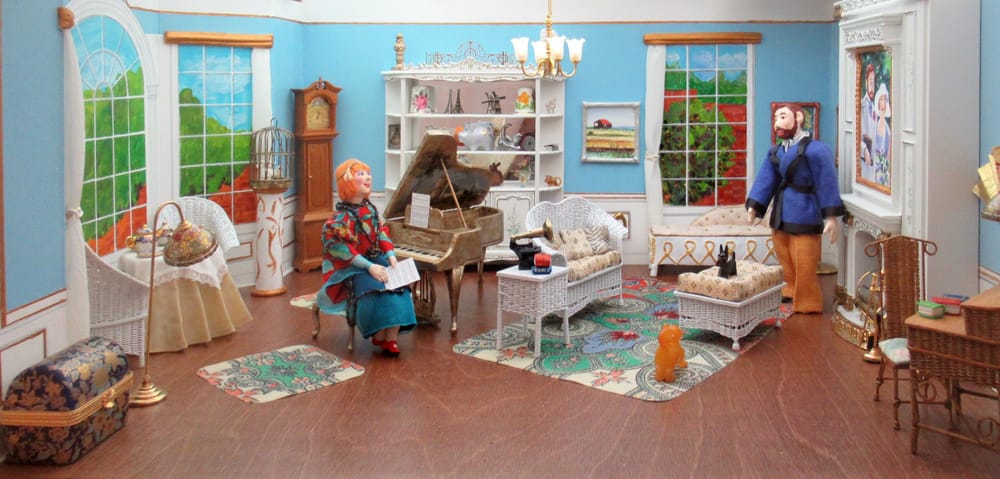
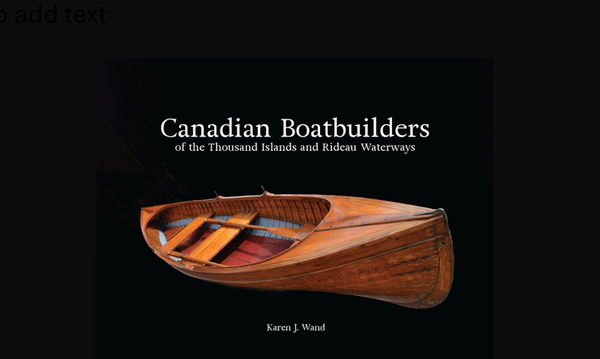
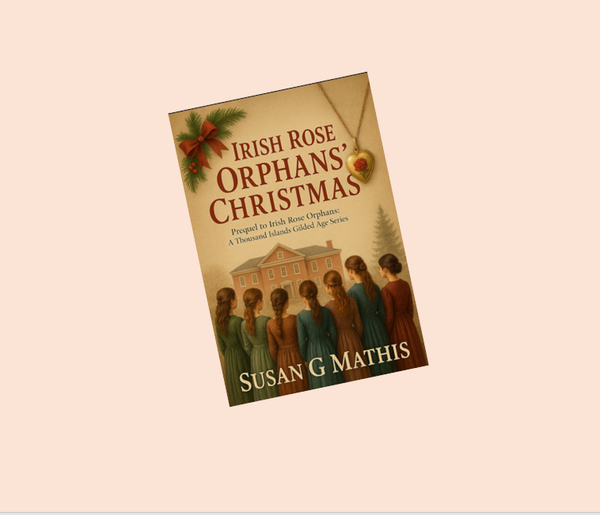
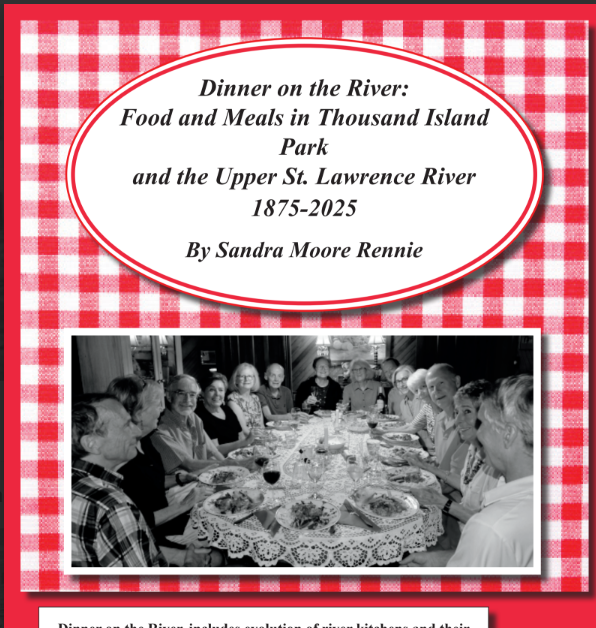
Please click here if you are unable to post your comment.